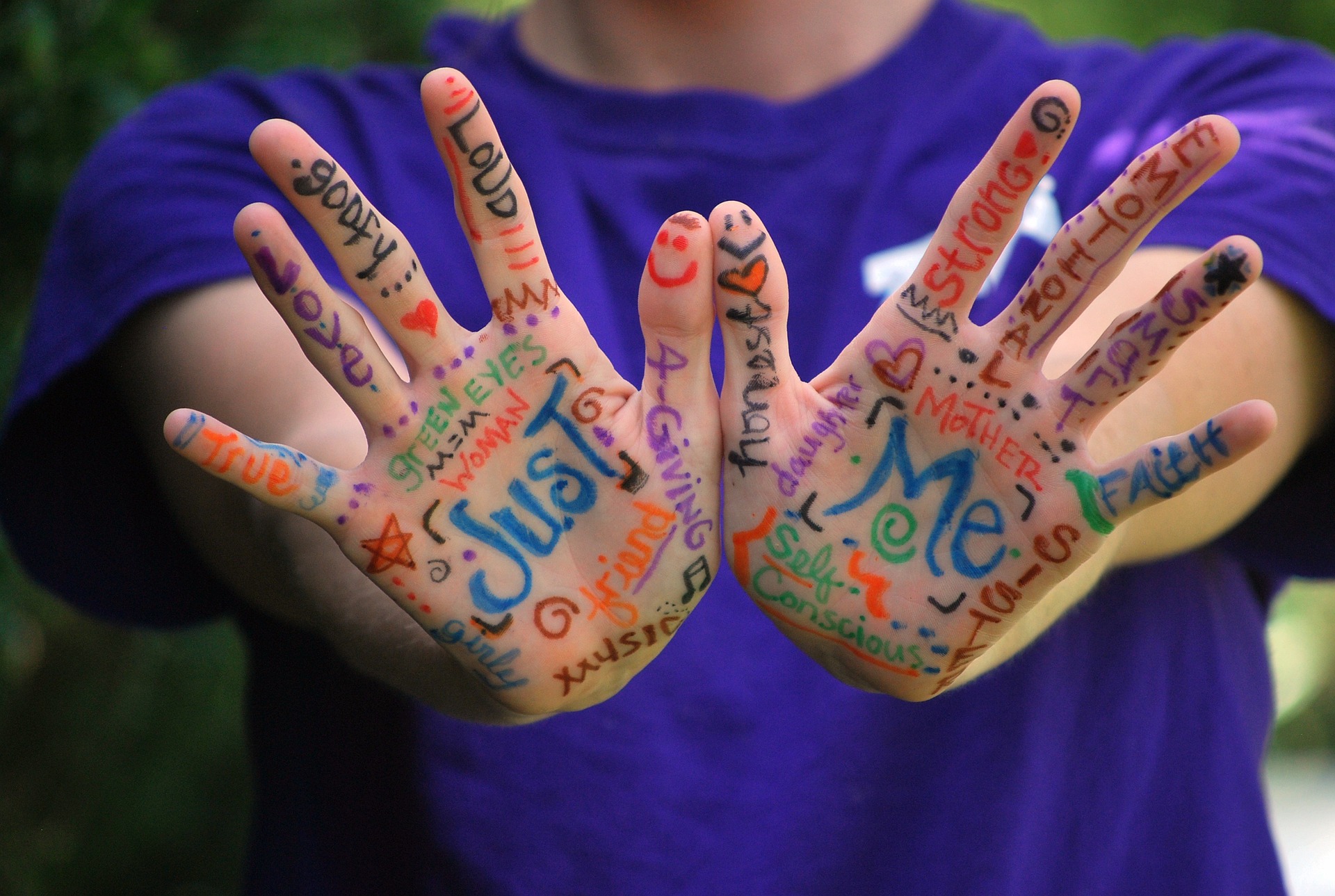In honor of National Eating Disorder Awareness Week, I thought it would be appropriate to introduce a helpful skill that directly relates to managing disordered behaviors as well as urges! The skill is called The CARESS Model and Lisa Ferentz, LCSW-C, developed it. This skill is a 3 step process that increases our self-awareness, self-compassion, sense of emotional and physical control, and resiliency. The skill was created to manage not only disordered eating behaviors and urges but also other self-destructive behaviors and urges.
Painful experiences and memories of painful experiences, as well as thoughts and sensations related to those events can cause emotional arousal or decrease it, possibly feeling numb. Feeling too much or too little arousal can cause us to have difficulties in accessing mental clarity, problem-solving, and distance from ourselves and our current experiences. Individuals who have experienced trauma, painful and/or invalidating environments, and painful events are more likely to engage in behaviors that are self-destructive as a desire to self-soothe or dissociate from those painful feelings that have not been fully resolved. Not fully processing emotions and experiences can lead to engaging in old coping strategies/self-destructive behaviors that can put us at risk.
When an individual is experiencing urges or engaging in behaviors such as disordered eating and self-harm, they are often feeling emotionally overloaded, possibly close to a skills break down point, which is a point where an individual is experiencing so much arousal or distress that skills will be not be effective enough or we might be unable to figure out what skills to use. Additionally, acting on these urges reinforces the harmful coping strategies to continue.

The CARESS model was designed to create self-sufficient, soothing strategies to create more meaning from an urge, rather than being told the individual cannot/is not allowed to engage in a self-destructive behavior. This approach is intended to feel less restrictive and limiting. Engaging in the CARESS skill accomplishes what the self-destructive behaviors hope to achieve, and also decreases the need to engage in these patterns over time.
Each step of this skill will take approximately 10-15 minutes each, totaling 30-45 minutes for the entire skill. The CARESS Model proposes that by the time an individual is finished engaging in the skill, they will feel less need to engage in the self-destructive behavior. While this skill is not directly from the DBT skills manual, if you are familiar with DBT, the activities suggested for each step are directly related to the distress tolerance module of DBT. If you’re currently engaged in DBT, you may already have effective strategies that need to be timed in a manner similar to the CARESS model structure.
So, we’ve discussed the causes for some of these behaviors and urges, the benefits and rationale as to why a person would use CARESS, now how do you do it? Below you will find step by step directions, as well as information as to what we are trying to accomplish and examples of activities for each step.
Helpful tip: It can be helpful to come up with activities for each step prior to having an urge, when an individual is in a more regulated state. When beginning this skill practice, it can be helpful to utilize a timer to make sure you are engaging in each step in the appropriate timeframe to gain the most benefits.
CA – Communicate Alternatively for 10-15 minutes
Emotions from painful experiences are stored in the body, when we experience emotional arousal and urges to act on self-destructive behaviors, this can be a way to act out the unresolved emotions, thoughts, and experiences.
A way to communicate alternatively by expressing this emotion in a more effective way. Here are a list of examples of activities to engage instead of the self-destructive behavior:
- Write or draw on the body part where you are feeling the emotion
- Write a narrative or 3rd person story, poem, or song about what you are feeling
- Drawing, painting, or singing about your emotions, thoughts, or experiences
- Play a musical instrument to express how you are feeling
RE – Release Endorphins for 10-15 minutes
Endorphins are a naturally occurring neurotransmitter in the brains. These react on opiate receptors to decrease pain and boost feelings of pleasure and relief. Various behaviorally activating activities can release endorphins such as working out, hugs, sex, having a lot of laughs. Endorphins can also be released in less effective behaviors such as impulsive spending, self-harm, binging and purging, food restriction, and gambling.
Engaging in effective activities activities can release the same endorphins the self-destructive behaviors seek out to release. Examples of effective activities are:
- Exercise – walking, walking up and down your stairs, jumping jacks, treadmill, elliptical, etc.
- Watching your favorite comedy
- Looking at your favorite memes
- Hugging a pillow, pet, or tree
SS – Self-Soothe for 10-15 minutes
Self-care and managing your sensory input is important in managing our stress responses. It is essential that each human finds effective ways to comfort and soothe themselves to manage triggering stressful events.
By self-soothing for this duration of time, it increases our emotional clarity, as well as calms down our mental and emotional responses. Here are some examples of self-soothing activities:
- Wrap yourself in a blanket
- Rock in a chair or get in your favorite, most comfortable chair or furniture
- Immerse yourself in nature.
- Have a cup of tea, coffee, or hot chocolate
- Take a warm bath or shower
- Light your favorite candle or scents
- Spray your favorite perfume or cologne.
If you want more help with skills like this, join our skills training groups or schedule with a therapist at CCDBT. We’d love to go more in depth with this skill and many more like it. Good luck!
About the Author
Alyssa Eichhorn (she/her), M.A., LPCC, is a Licensed Professional Clinical Counselor that specializes in dialectical behavior therapy. She works with all ages in a radically genuine and nonjudgmental setting to help individuals identify more effective and balanced behaviors to create a life worth living. Alyssa provides a directive and warm approach with her clients to facilitate solutions, growth, and change where they want it. Click Here to learn more about Alyssa’s experience and therapeutic style.
https://www.theferentzinstitute.com/2021/03/15/using-caress-work-self-destructive-behaviors/ https://www.synergypsychotherapy.com/thegobl/2021/4/4/caress-a-coping-strategy-12


